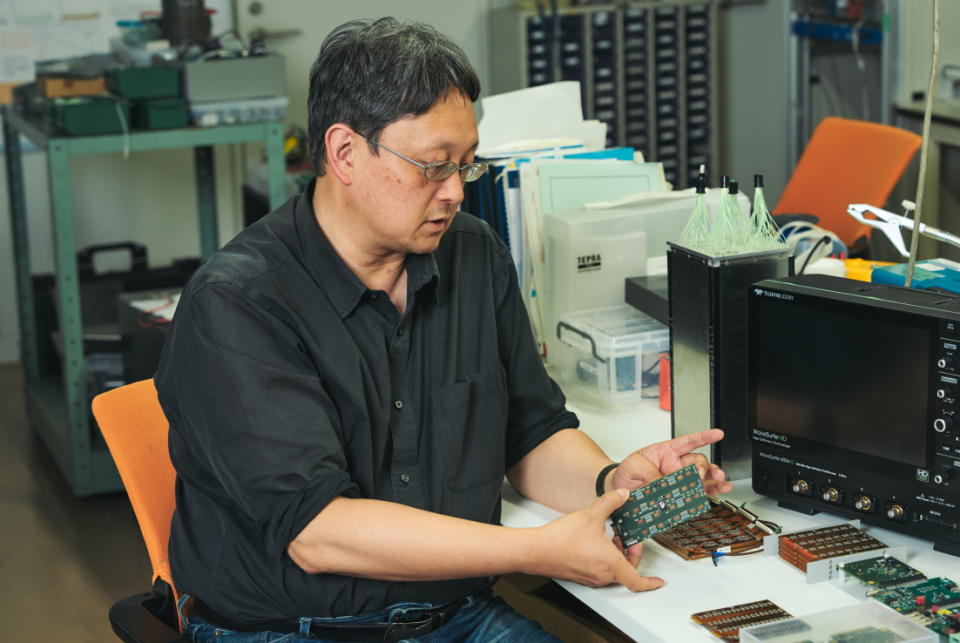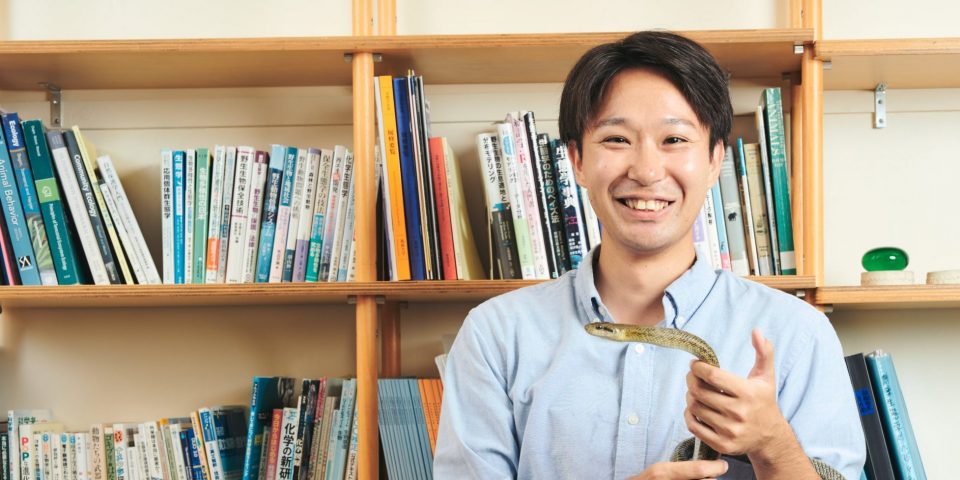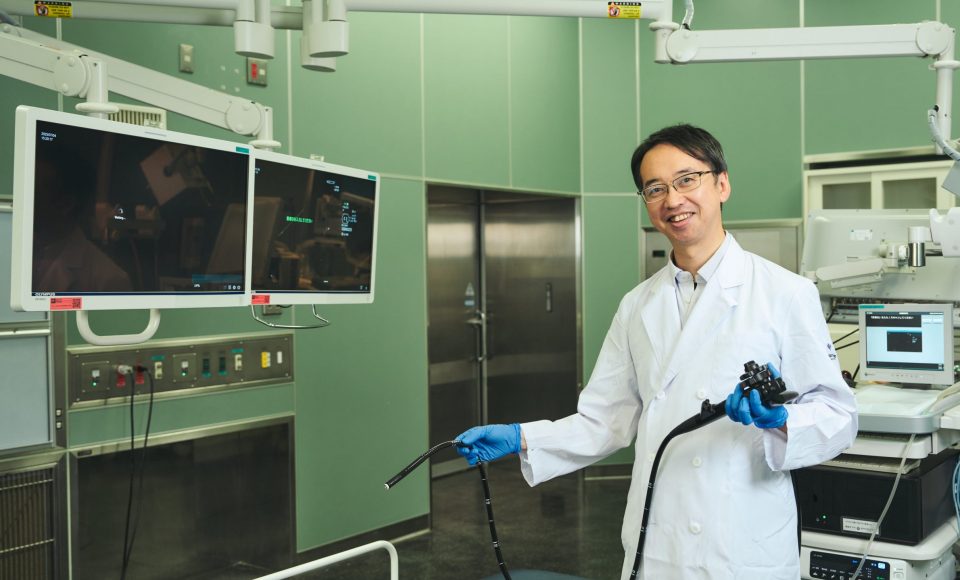Just outside Geneva, Switzerland, lies the Large Hadron Collider (LHC), a massive underground accelerator. Within its ring, roughly the size of Tokyo’s Yamanote Line, particles are accelerated to nearly the speed of light and then smashed together, recreating the extreme temperatures and densities that existed in the very early universe. By using these collisions, Professor Chujo and his team are working to unravel the origins of matter. They are currently developing and preparing to install their newly designed detector, FoCal, at the LHC.

Creating a Plasma of Quarks and Gluons
We collide heavy atomic nuclei, such as lead, to create a quark–gluon plasma (QGP), a state in which elementary particles, such as quarks and gluons, exist freely rather than being confined within protons and neutrons. By analyzing the data collected with the ALICE detector, we investigate the properties of QGP to establish how matter came into existence and reveal the origin of its mass.
Although we have been involved in the design and construction of ALICE from the beginning, the newly added FoCal detector will, for the first time in the world, allow precise measurements of the energy and type of particles produced in collisions that travel into the ultra-forward region (the direction of the motion of nuclei). None of the other LHC detectors are capable of capturing particles in this region. While the LHC primarily conducts proton–proton collisions, ALICE is the only experiment dedicated to heavy-ion collisions. It is a large international collaboration involving 164 research institutions across 39 countries, with six institutions from Japan, including the University of Tsukuba, participating.
Precisely Measuring Particles Produced in Collisions to Investigate QGP Properties
Atomic nuclei are composed of protons and neutrons, each of which consists of three quarks. These quarks are held tightly together by gluons, which are particles that mediate this strong force. This mechanism, known as quark confinement, forms the very basis of the birth of matter.
However, until about 10 microseconds after the Big Bang, quarks and gluons existed in a free state, namely, as QGP. We recreate the extreme conditions of high temperature and density immediately after the Big Bang by colliding lead nuclei at nearly the speed of light, thereby producing QGP (Figure ). A number of particles and particle bundles (jets), including protons, neutrons, pions, and photons, are generated during these collisions. ALICE detects them and measures their types, numbers, momenta, and angular trajectories. By comparing these data with physical models, we derive quantities, such as the energy density and temperature of QGP, enabling us to investigate its properties in detail and clarify how confinement emerges. At present, we are proposing and developing a new detector, FoCal, and working towards its implementation in the LHC to gain a more detailed understanding of QGP.
Capturing the Color Glass Condensate (CGC) with FoCal and Probing the Origin of Mass with ALICE3
Theoretically, a state known as CGC has been predicted to emerge immediately before the formation of QGP in atomic nuclei collisions. CGC is a condition in which gluons are produced in avalanche-like numbers and become extremely dense; however, this has yet to be observed. The interiors of protons and neutrons may be completely filled with the gluons produced. The clarification of how QGP is generated from this state through collisions is a crucial factor in unraveling the birth of matter. With FoCal, we aim to precisely measure the density of gluons, investigate whether CGC exists, and, if so, elucidate its properties.
As the project leader for the development of FoCal, I have dedicated my efforts not only to the technical aspects of the detector itself, but also to securing funding for research, development, and production. The design has already been completed, and installation is scheduled for 2028. As one of the originators of the project, I am very much looking forward to experiments with FoCal.
The next stage is the construction of ALICE3, a high-resolution successor to ALICE, which we hope to lead as the primary driving force. The central question we wish to address with ALICE3 is the origin of mass in matter. The Higgs boson, discovered at the LHC in 2012, gives mass to elementary particles such as quarks. However, even if we sum up the masses of the 3 constituent quarks, it accounts for only a very small percentage of the proton’s total mass. Since gluons have zero mass, the question remains: where does the remaining mass come from? The leading candidate is the mechanism of chiral symmetry breaking, first proposed by Dr. Yoichiro Nambu (recipient of the 2008 Nobel Prize in Physics). With ALICE3, we aim to put this to the test and hope to conduct this experiment within the next decade.

Source: Au + Au Collisions at BNL’s Relativistic Heavy Ion Collider (RHIC)
Au + Au Simulation Data: Klaus Kinder-Geiger, Ronald Longacre
Au + Au Visualization: Ballard Andrews, Michael McGuigan, Gordon Smith
Figure. According to quantum chromodynamics, before QGP is created in collisions between nuclei, CGC is predicted to form inside nuclei. With the new FoCal detector, scheduled for installation in 2028, we aim to confirm whether CGC exists, and if so, to clarify its properties.
Hadronization: The process by which the quark–gluon plasma cools and gives rise to particles (hadrons) such as protons and neutrons.
Particle freeze-out: The stage after hadronization when the types and momenta of the particles produced become fixed.






